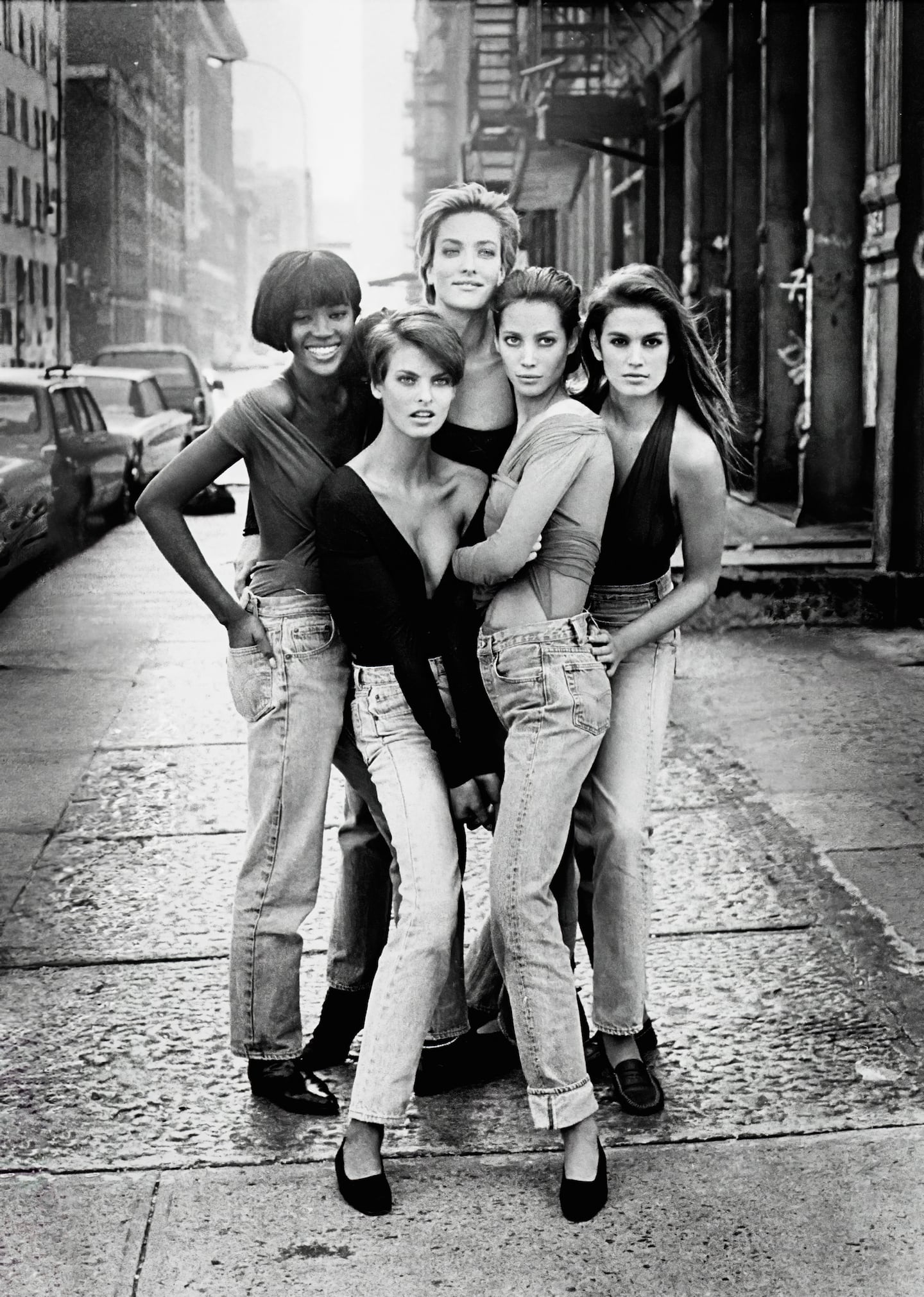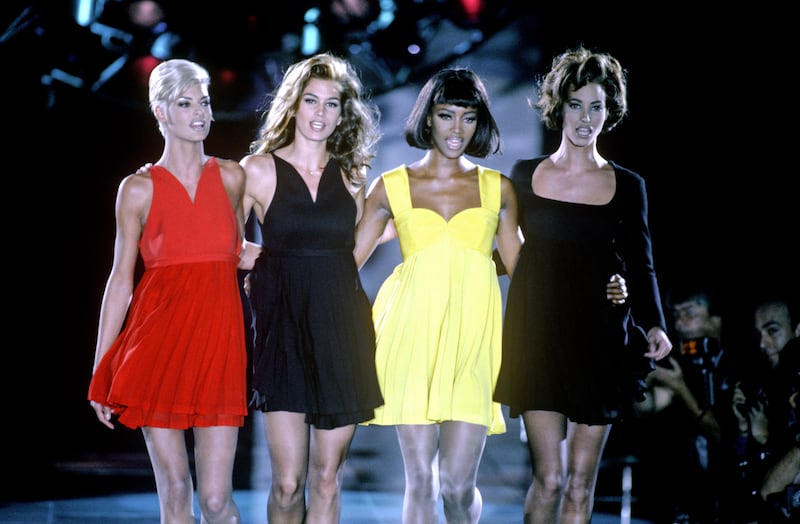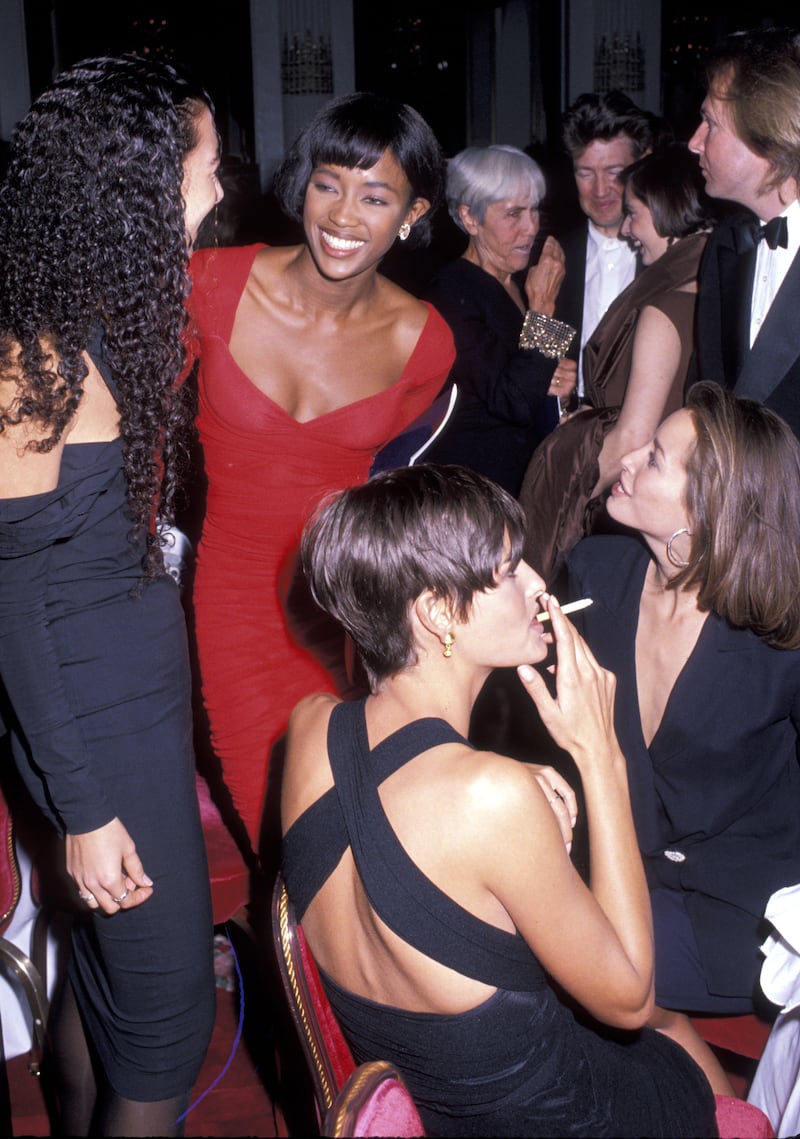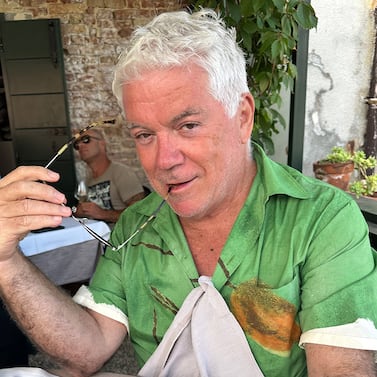
The Business of Fashion
Agenda-setting intelligence, analysis and advice for the global fashion community.

Agenda-setting intelligence, analysis and advice for the global fashion community.

These are the best of times, these are the worst of times. Everything’s iconic, everyone’s a supermodel. Exaggeration for effect has always been fashion’s modus operandi. Words are bandied round until whatever power they were intended to convey evaporates. But, as of September 20, Apple TV+ will be doing its level best to restore lustre to at least one of fashion’s overused superlatives. “The Super Models” is a four-part docu-series that takes us back to the early Nineties when a handful of women dominated fashion’s runways and magazines to such a degree that much of the world came to see the fashion industry in a new light.
The series focuses on the four women who truly defined the “Supermodels” phenomenon at the time: Naomi Campbell, Cindy Crawford, Christy Turlington and Linda Evangelista, whose presence elevates a career opportunity to a drama for the ages. “I wasn’t discovered,” Evangelista announces imperiously. “I chose.” The others took a more traditional route, scouted on the streets of London (Naomi) or at riding school in Coral Gables, Florida (Christy). But whether it was by choice or not, their trajectories came together to form a kind of pop cultural critical mass. “We weren’t The Beatles,” queenpin Evangelista says dismissively, but they were four very distinct personalities whose irresistible fusion of beauty, personality and brazen self-confidence had a transformative impact on fashion and entertainment.
The cast of supporting characters is scarcely less absorbing: the photographers Steven Meisel and Peter Lindbergh, the designers Gianni Versace and Karl Lagerfeld, the editors Franca Sozzani and Liz Tilberis. All of them were instrumental in creating an umbilical connection between fashion magazines and designer catwalks. Before them, models worked in one context or the other. After them, crossover was essential to everyone’s survival. Legend has it that Tilberis, then editor of British Vogue, and Donatella Versace conspired to persuade brother Gianni to use the women from his advertising on his catwalk. Another version credits a Eureka moment for Gianni, when he overheard Linda expressing her desire to walk in a show.
It helps when an origin story is surrounded in myth. What isn’t open to dispute is the broad strokes that defined the rise of the Supermodels. In January 1990, Lindbergh photographed The Four (plus the incomparable Tatjana Patitz, who tragically died at the beginning of this year) for the cover of British Vogue. When he saw the magazine, George Michael, who was then in mid-dispute with his record label and reluctant to apply his face to any promotion for his new album, hired The Four (plus Tatjana) to act out his single “Freedom 90″ for a video that was released in October 1990. In March 1991, The Four lip-synced their way down the catwalk to that same song as the finale of Versace’s show. That was the Wham Bam Thank You Ma’am trifecta that inserted “Supermodel” into the pop cultural conversation.
ADVERTISEMENT

Now it wasn’t only the cover of Vogue that models appeared on. It was also Rolling Stone and Playboy and TIME, and every talk show and entertainment show, fuelled by cable tv’s exploding coverage of fashion. I know, because my own show “Fashion File” was early to the opportunity, as were Elsa Klensch at CNN, Jeanne Beker of Fashion Television and Marie Christiane Marek from Paris Mode. We were like glorified video diarists, and the backstage zone at Fashion Week was reality TV in its most primordial form. It turned the models into stars, and the photographers, stylists, hairdressers, makeup artists and agents who swarmed like pilot fish around them into character actors. There were always moments of gorgeous disconnect. You’d see girls slumped against a wall with their Walkman and a book, many barely out of teenage, and minutes later, you’d see them again as the defining beauties of their age, ambulating insolently down a brightly-lit strip of runway.
The Supermodel wasn’t a completely new notion. The great mannequins of fashion’s past — Suzy Parker, Dorian Leigh, Jean Shrimpton, Twiggy, Veruschka — were all called “supermodels” at one point or another. And it only takes a millisecond of internet archeology to find a cover story from New York Magazine in 1981 called “The Spoiled Supermodels.” Self-explanatory. Demanding beauties were upping their day rates to match a rising demand for recognisable names and faces. The “super” names in that magazine piece scarcely resonate now because so much changed so quickly. A decade later, the rates had spiralled from thousands to millions. The spoiling grew commensurately. So did the recognition.
The balance of power shifted dramatically in the late Eighties. In the Sixties, it was photographers who called the shots; in the Seventies, the magazines; then the modelling agencies hogged the spotlight. By 1990, it was the models themselves, personified by The Four, who were the headline acts, independent, confident, fully aware of the power they possessed as a united front. “A bond that single-handedly shifted the power dynamic of an entire industry” is how the press release for “The Super Models” describes it.
But then, in a suitably dramatic coda, we got to see their power diffused. With Vogue’s help, Hollywood stars reclaimed the style supremacy they’d surrendered to the supermodels. The designers who’d come to resent the mass distraction from their own work gladly embraced the so-called “waif” as an alternative. Minimalism scooped the maximalism of the early Nineties. Grunge trumped glamour, with “heroin chic” as one last twist of the knife. When Evangelista announced, “We don’t vogue, we are Vogue,” it met with a curdled response similar to John Lennon’s declaration that The Beatles (them again) were more popular than Jesus. But, like him, she was simply stating a fact. And it was often overlooked that she was supermodeldom’s super-ironist. Not getting out of bed for less than $10,000? Again, a statement of fact, but also a comment on the ludicrousness of such a situation to begin with. It didn’t matter in the end. Her words became an unwitting benchmark for an age of excess whose passing people saw fit to celebrate. (Now, of course, all we’d need to say is “Jeff Bezos’s sailboat.”)

The Supermodels story has so much of everything — beauty, brains, hubris, imperial excess, high-profile hookups, scandal, eclipse, comebacks — you’re left wondering why it took three decades to tell it. I’m endlessly curious about the cycles of history, how the unacceptable, the dismissed, the overlooked circle back to become le dernier cri. That is practically a definition of fashion. Apple’s docuseries arrives on the crest of a wave of interest in the Nineties and after.
The best of a stack of recent coffee table publications is Phaidon’s “Linda Evangelista by Steven Meisel,” a monograph of the greatest collaboration in fashion history. Recently, there was “Kingdom of Dreams,” another docu-series that boggles the mind with its insights into the Borgian intrigues of Bernard Arnault and François Pinault’s empire-building. Soon, there’ll be Kevin McDonald’s “High and Low – John Galliano,” whose promise of revelation is implicit in its title, and Arte’s “The Versace Saga,” with more TV and a significant museum exhibition to come. In all of these, the supermodel is dominant, an icon of the era in the truest sense.
So here’s my theory. There is a paradoxical innocence about the story of “The Super Models.” It’s a prelapsarian fashion moment before social media swamped the world. We were wilfully naïve. The exploitation lurking behind the scenes hadn’t yet intruded on our fantasias — imagined but not confirmed. Robin Givhan addresses this in her contribution to the series, which leaves The Four playing catch-up about what they knew and when they knew it. Their independence, their confidence, their united front, their paychecks — none of it was the universal condition in modelling. So maybe that’s why it’s taken so long to tell this story of innocence and excess, strangely suited to this best and worst of times.
Operating quietly under the radar, a network of ‘mother agencies’ across Africa and Asia are busy scouting for the next supermodel, making a fortune in commission while boosting diversity in the fashion capitals.
Social media has turned fashion models into powerful digital publishers, some of whom have far larger audiences than brands or traditional magazines.

Tim Blanks is Editor-at-Large at The Business of Fashion. He is based in London and covers designers, fashion weeks and fashion’s creative class.
The stylist is set to unveil a bi-annual print magazine and digital platform, with a team that includes Holly Shackleton and Fran Burns.
Luxury book publishers — and husband and wife — Prosper and Martine Assouline join BoF founder and editor-in-chief Imran Amed to discuss the genesis of their publishing business and how they are growing it into a global lifestyle brand.
Now under the ownership of British publisher Future, both Marie Claire and WhoWhatWear are contending with how to grow their new parent’s US operations in the ever-challenging media landscape.
Fast Company has named The Business of Fashion one of the ‘world’s most innovative companies’ for a second time for demonstrating ‘how a media brand can leverage AI to add reader value rather than erode trust with AI-written news articles.’